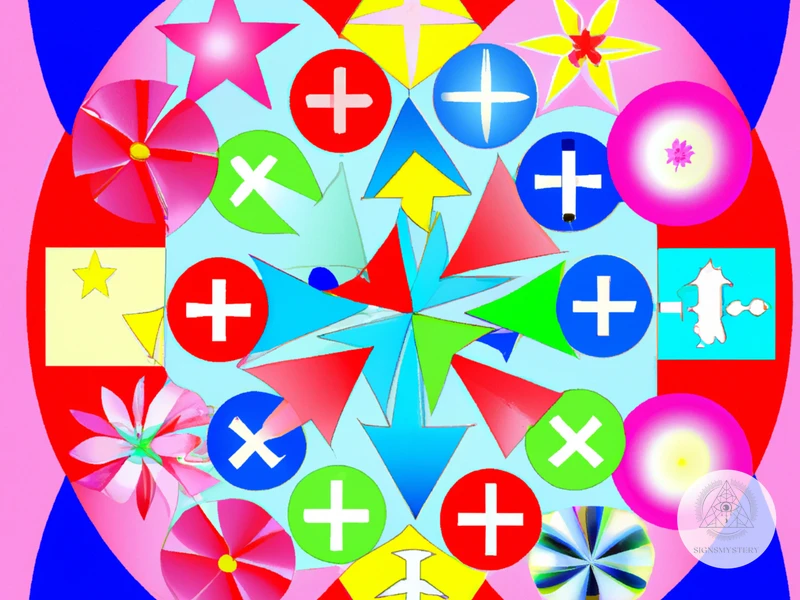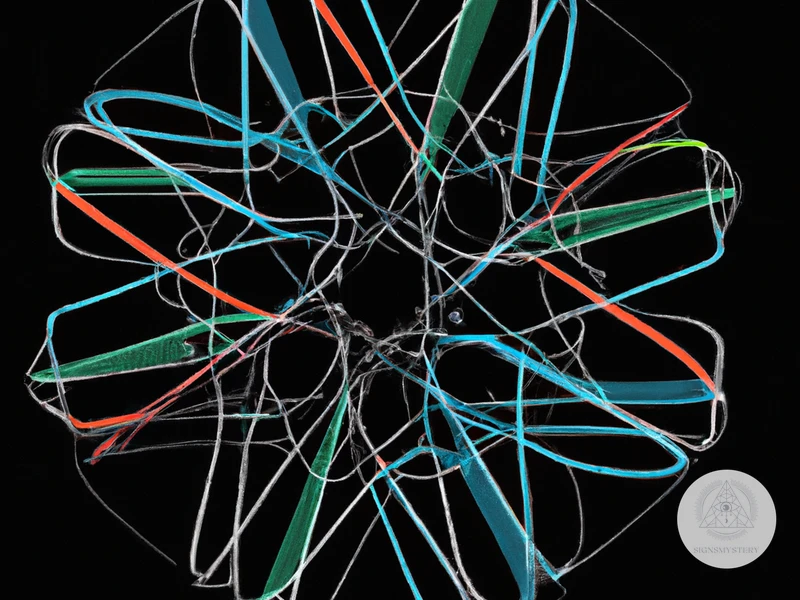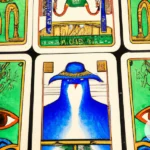As elections draw closer, political parties turn their attention to designing a symbol that represents their mission and goals. A party symbol plays a significant role in gaining voter trust, loyalty, and support. But designing a good party symbol that can make an impact can be tricky and requires careful consideration. In this article, we delve into the characteristics of a good party symbol and how to design it. We also explore the importance of a party symbol and how it affects voter perception, with case studies on good and bad party symbols. Join us to learn what experts have to say about differentiating a good party symbol from a bad one.
Importance of Party Symbols

A political party symbol is a visual representation used by political parties to promote themselves among voters. Party symbols play a crucial role in influencing voter behavior during elections, and can drastically impact a political party’s performance in the polls. Research has shown that the presence of a party symbol on the ballot can increase a party’s chances of winning by improving its visibility and recognition among voters. Designing an effective party symbol is crucial for political parties. In this article, we will explore what distinguishes good party symbols from bad ones, and provide tips on how to create an effective party symbol design.
What are Party Symbols and Why do they Matter?
Party symbols are graphical representations of a political party. These symbols are used by parties to promote their brand and to differentiate themselves from other political parties. Party symbols are quite important because they play a crucial role in election campaigns. A party’s symbol is its visual identity, and it is often the first thing people remember about a party.
Party symbols can affect the voters’ perception of a political party. They can evoke positive or negative emotions in voters, and they can also influence the way people vote. Political parties are quite careful in choosing their party symbols. They spend a lot of time and resources in designing a symbol that will appeal to the masses and help them win elections.
An interesting example of the impact of political symbols is India where political party symbols are now synonymous with their respective parties. Several people from rural areas, where there are high illiteracy rates, cannot read the names of political parties, but they identify the parties by their symbols. That is why its electoral law recognizes candidates by their party symbols.
Party symbols are essential because they help parties distinguish themselves from their competitors and build brand identity. Effective party symbols can create a strong emotional connection with voters, positively influencing their decisions on the election day. Political parties should pay careful attention when selecting and designing their party symbols.
How Party Symbols Affect Voter Perception
The party symbol is an important aspect of election campaigns. It serves as the visual representation for each political party and plays a crucial role in influencing voter perception. The party symbol can either attract voters by communicating a political party’s values and goals or detract from a party’s appeal by conveying a negative message. For example, in India, the party symbols are so powerful that they are a deciding factor for most voters.
Studies have shown that party symbols can impact a voter’s decision-making process. In fact, a research paper published in the Indian Journal of Political Science states that voters are more likely to remember and recognize a political party’s symbol rather than its name or its candidate’s name. This shows how important it is for political parties to carefully design and select a strong party symbol that would remain in the minds of the voters.
A party symbol can influence a voter’s perception of a political party in several ways. Firstly, it can help create a positive association with the party’s policies, history, and values. For example, the Indian National Congress, one of the oldest political parties in India, uses a hand as its symbol to portray its commitment to social justice and upliftment of the poor. Similarly, the Bharatiya Janata Party (BJP) uses a lotus as its symbol, representing its ideology of Hindu nationalism as well as purity and enlightenment.
On the other hand, a political party’s choice of party symbol could also lead to negative associations that could hurt its appeal. For example, in the US, the Republican Party’s elephant symbol has been criticized for being aggressive and slow-witted, leading to negative connotations being associated with the party.
Political parties should carefully consider the impact their party symbols would have on voters and ensure that it aligns with their intended message and ideology. In the next section, we will discuss the characteristics of an effective party symbol and how to design one that would resonate positively with voters.
Case Studies: Good Party Symbols vs Bad Ones
The power of a party symbol cannot be overstated. It serves as an iconic representation of a political party and plays a critical role in distinguishing it from its competitors. A well-designed symbol can instantly communicate the political ideology, values and beliefs of a party. Conversely, a poorly designed symbol can communicate the wrong message and even repel potential voters.
One example of an excellent party symbol is the Democratic Party donkey. It is an iconic symbol of the party that has stood the test of time. The donkey represents the working-class, the backbone of the Democratic party. It is distinctive and memorable and has been popularized over time through various mediums like cartoons, posters, and merchandise.
On the other hand, a prime example of a bad party symbol is the UK’s Independent Party’s “lion and torch” symbol. It suffered from a lack of distinctiveness, simplicity, relevance, memorability, and flexibility. The lion and torch were both common symbols in the UK, which made it difficult to associate the symbol with the Independent Party. Additionally, it was complex and difficult to reproduce across all mediums. The result was a symbol that failed to gather momentum and resonate with the voters.
Another example of a bad party symbol is the Yugoslavian Unity Party’s symbol, which featured a heap of letters and a red star. It was overly complicated, lacked distinctiveness, and was unmemorable. It also had a controversial political connotation as the red star had been associated with the communist party during Yugoslavia’s history. The result was that the symbol failed to engage voters and differentiate the party from their competitors.
The difference between a good party symbol and a bad one can be significant, influencing the party’s perception by voters. Good party symbols are distinctive, simple, relevant, flexible, and memorable. In contrast, poor party symbols are overly complex, lack distinctiveness, relevance, memorability or flexibility. A well-designed party symbol requires research, brainstorming, working with a designer, careful color and typography choices, and testing and refining of the symbol.
For more in-depth information about political party symbols, their history, meanings and their impact on voter behavior, please visit our article on Political Party Symbols Deep Dive.
Characteristics of an Effective Party Symbol
An effective party symbol must possess certain characteristics to stand out and be memorable to the voters. First and foremost, it should be distinctive and easy to recognize, even from a distance. Secondly, it should be simple, with minimal details that may cause confusion or distraction. Thirdly, it should be relevant to the party’s ideology and message. Fourthly, it should be flexible, allowing for easy adaptation to different media and sizes. Finally, it should be memorable, leaving a lasting impression on the voter’s mind. These characteristics can be observed in many famous party symbols, such as the donkey and elephant of the US political parties, as explained in the article on famous party symbols and their meanings. The future of party symbols, given the rise of digital campaigning, is discussed in the article on future party symbols.
Distinctiveness
is perhaps the most crucial characteristic of an effective party symbol. The symbol should be unique and easily distinguishable from other party symbols to avoid confusion, especially during elections. For instance, using a symbol that already belongs to another political party might lead to negative perceptions and legal issues.
A party symbol that stands out from the rest can help the party create an identity in the voters’ minds, aid recall and recognition, and differentiate it from the competitors. A symbol that lacks distinctiveness becomes unnoticeable and fails to grab the voters’ attention.
According to a study by the Journal of Political Marketing, uniqueness is among the most attractive attributes voters consider when evaluating party symbols. The study found that distinctive symbols are likely to generate higher recall among voters than the indistinctive ones.
A great way to ensure distinctiveness is by conducting rigorous research to understand the symbols’ evolution, what is currently in use, and what will work best for your party. Such research can also help you avoid using symbols that might be misconstrued or have negative connotations.
A distinctive party symbol that stands out and represents the party’s core values and beliefs can significantly influence voter behavior during elections, giving the party an edge over its competitors. Understanding the evolution of party symbols, as well as current trends, can assist in creating a symbol that is unique and distinguishable in the voters’ minds.
Simplicity
is one of the most critical characteristics of an effective party symbol. The design of the symbol should be simple, easily recognizable, and memorable. A simple symbol increases the chances that voters will identify and remember it. Complicated designs, on the other hand, can make the symbol difficult to identify, and voters may confuse it with other symbols.
A simple party symbol does not mean that it has to be plain or uninteresting. Instead, a simple design communicates a strong and clear message. It should be easy to draw, reproduce, and print on small promotional materials, such as flyers, brochures, business cards, and stickers.
For example, the logo of the Republican Party of the United States of America is a simple elephant silhouette that is recognizable worldwide. The symbol is simple and straightforward, yet it conveys the message of strength, reliability, and majesty. A voter who sees the elephant symbol on the ballot can quickly relate it to the Republican Party.
In contrast, a complex symbol like the five-star Chinese Communist Party emblem can be challenging to remember and reproduce. This complexity makes it less effective in communicating the party’s messages and values. The emblem design has a long history, but it does not mean that complexity always works.
A simple party symbol helps to connect the party and voters efficiently. Voters start relating the symbol to the party and its platform, even before they learn about the political positions and policies. A simple design is less distracting, which can lead the voter’s focus to be directed towards the party’s name, campaign slogan, and other messaging.
In conclusion, simplicity is one of the key characteristics of an effective party symbol. The simpler the symbol, the more memorable and recognizable it becomes. A simple symbol helps to communicate the party’s message effectively and creates a strong visual identity, which fosters positive associations amongst voters.
Relevance
The relevance of a party symbol refers to how well it represents the values and goals of the party. A relevant symbol will resonate with voters and create a sense of connection and understanding between the party and its supporters.
When a party symbol is irrelevant, it can actually be detrimental to the party’s image and reputation. Voters may perceive the party as being out of touch or disconnected from their needs and interests. It’s important to choose a symbol that is not only distinctive and memorable but also relevant to the party’s mission and values.
A relevant party symbol should:
- Align with the party’s platform: The symbol should reflect the issues and policies that the party stands for.
- Reflect the party’s history: If the party has a strong history or legacy, the symbol should pay tribute to that history.
- Represent the party’s target audience: A party that aims to appeal to young voters should choose a symbol that is youthful and modern.
- Differentiate the party from opponents: The symbol should be unique and immediately recognizable to set the party apart from other political groups.
For example, the Republican Party’s elephant symbol is relevant because it symbolizes strength and power, which aligns with the party’s platform of conservative values and a strong national defense. The Democratic Party’s donkey symbol, on the other hand, is relevant because it represents stubbornness and persistence, which aligns with the party’s commitment to progress and social justice.
A relevant party symbol is crucial for creating a strong and lasting connection between a political party and its supporters. By aligning with the party’s platform, reflecting its history, and representing its target audience, a relevant symbol can help a party stand out from its opponents and win the hearts and minds of voters.
Flexibility
refers to the ability of a party symbol to adapt to different sizes, mediums, and color schemes while maintaining its recognizability. A flexible party symbol can be easily resized and reproduced without losing its visual impact. This is particularly important in today’s digital age, where party symbols appear on a wide range of platforms, from websites to social media.
To create a flexible party symbol, designers should follow a few key principles. First, the symbol should be scalable, which means it should maintain its proportions and legibility even when enlarged or reduced. Second, the symbol should be reproducible in black and white or grayscale, which ensures it can be used in a variety of mediums and contexts. Third, the symbol should be easily adaptable to different color schemes, such as those used on campaign materials, without losing its character or meaning.
One example of a flexible party symbol is the Democratic Party’s donkey. This symbol can be easily resized and recolored without losing its distinctiveness or meaning. It can be reproduced in black and white or colored versions, making it suitable for a range of contexts, from campaign buttons to website banners.
Another example is the logo of the International Olympic Committee. The five Olympic rings can be reproduced in any color scheme, making them easily adaptable to different host countries. The rings scale well, appearing equally recognizable on a medal as they do on a billboard.
In contrast, a party symbol that lacks flexibility may be difficult to recognize or reproduce across media. For example, a complex symbol with many intricate details may become illegible when scaled down. A symbol that relies heavily on specific colors or shading may be difficult to reproduce in black and white or grayscale.
Flexibility is an important characteristic of an effective party symbol. A flexible
Subscribe to Our Newsletter
Sign up to receive the latest news and updates.
Memorability
Memorability may be the most important characteristic of a good party symbol. A symbol that can’t be easily remembered is unlikely to have much of an impact on voter behavior. Memorable symbols, on the other hand, are effective at generating enthusiasm and engagement with the political campaign. They have the power to create lasting connections between the party and its supporters. For example, the Democratic Party’s donkey and the Republican Party’s elephant are both memorable symbols that have become immediately recognizable across the United States.
To improve memorability, keep the symbol simple and easily recognizable. The symbol should be unique, but not so complicated that it’s difficult to remember. Focus on colors and shapes that stand out and are easy to recognize from a distance. Using bold fonts and sharp lines can also help increase the memorability of the symbol.
When thinking about memorability, it’s also important to keep in mind the target audience. For example, younger voters may respond better to more modern and trendy symbols, while older voters may appreciate more traditional designs. Additionally, creating an emotional connection with the symbol can help with memorability. If people have positive emotions associated with the symbol, they are more likely to remember it.
Memorability is a crucial characteristic of a successful party symbol. It can help create lasting connections between the party and its supporters, as well as increase engagement and enthusiasm. By focusing on simplicity, uniqueness, and emotional appeal, designers can create a symbol that is memorable and effective.
Designing an Effective Party Symbol
There are several key steps to design an effective party symbol. Firstly, thorough research and brainstorming are essential to develop the right concept for the party’s values and mission. In this stage, it is also important to consider the target audience and political context. Secondly, it is recommendable to work with a skilled designer who can translate the concept into a visually distinctive and simple symbol. Thirdly, selecting the right colors and typography is crucial to support the symbol’s message and appeal. Lastly, testing and refining the symbol’s design can help to detect bugs and ensure its effectiveness. The process of designing an effective party symbol requires careful planning and attention to detail.
Step 1: Research and brainstorming
When it comes to designing an effective party symbol, research and brainstorming are essential first steps. This involves gathering information about the party’s values, messaging, target audience, and competitors. The goal is to create a symbol that not only represents the party accurately but also stands out from others.
During the brainstorming stage, it’s important to generate a wide range of ideas without filtering them initially. Brainstorming can be done internally or with a group of people to get different perspectives. The ideas should then be narrowed down based on relevance to the party and its messaging.
Additionally, it’s crucial to consider the cultural, social, and historical context of the symbol. For example, some symbols may have negative connotations in certain cultures or countries and should be avoided. On the other hand, a symbol that highlights a party’s history or heritage can be powerful in connecting with voters.
This step should also involve researching the effectiveness of different symbols used by parties in the past and understanding why they were successful or unsuccessful. The evolution of party symbols is an interesting area to explore, as it can give insight into how society and politics have changed over time.
Overall, should be a comprehensive and thoughtful process that lays the groundwork for an impactful party symbol. This stage sets the tone for the design process, providing a clear direction for the designer to take. Understanding the importance of a party symbol and the impact it has on voter perception is crucial for creating a successful symbol.
Step 2: Working with a Designer
Step 2: Working with a Designer
Once you have conducted proper research and brainstorming in order to come up with some potential party symbol designs, it is important to work with a professional designer who has a keen eye for effective logo design.
Here are some tips for working with a designer:
| Tips | Explanation |
|---|---|
| Find a designer who has experience with logo design. | You want to look for a designer who has experience specifically with logo design, as this is different from other types of graphic design. |
| Be clear about your brand’s message and values. | Your party symbol needs to align with your brand’s overall message and values. Be sure to explain these clearly to the designer so they can design accordingly. |
| Collaborate with the designer. | Even though you are hiring a designer for their skills and expertise, collaboration is key. Be open to their ideas and suggestions, but also provide your own feedback and input. |
| Ask for multiple designs. | Don’t settle for the first design the designer creates. Ask for multiple options so you can choose the most effective one. |
| Consider getting feedback from others. | Show the potential designs to others within your party or target audience for feedback. This can help you make a more informed decision. |
Remember, the party symbol is an important representation of your political party and its values, so it should not be taken lightly. Working with a professional designer can ensure that your symbol effectively communicates your brand’s message and resonates with your target audience.
Step 3: Choosing the Right Colors and Typography
When it comes to designing an effective party symbol, choosing the right colors and typography plays a critical role. Color psychology is an important aspect that should be considered during this step. The colors must evoke emotions and convey the intended message of the party. For example, blue can represent trust, reliability, and strength, while red can represent passion, energy, and determination.
Typography is equally important, as it can convey the personality and tone of a party’s message. The chosen font must be easily readable, and appropriate for the intended audience. A sans-serif font can convey simplicity and modernity, while a serif font can convey tradition and reliability.
It is also important to consider the combination of colors and typography. They must complement each other and work together to create a cohesive symbol that effectively represents the party. A good balance must be achieved in terms of size, spacing, and weight to ensure that the symbol is easily recognizable and legible from far away.
The chosen colors and typography must be practical for use across various mediums, such as social media, print, and merchandise. Conservative use of colors and typography can facilitate versatility.
During this step, it is recommended to work closely with a designer and get feedback from test audiences. This can help refine and perfect the party symbol to ensure it is as effective as possible for conveying the desired message.
Step 4: Testing and Refining
Once you have a design concept for your party symbol, it’s important to test it out before finalizing it. This involves conducting surveys and focus groups to get feedback from potential voters.
During testing, pay attention to the aspects of the symbol that voters respond positively to and which ones they find confusing or unappealing. It’s important to test the symbol on a diverse group of people to get a wide range of opinions.
Based on the feedback received, refine and modify the symbol as needed. This could involve adjusting the colors, typography, or imagery to make it more appealing and relevant.
Once you’ve made the necessary changes, test the symbol again to ensure that it has improved. Repeat this process until the symbol is performing well in testing and is resonating with voters.
It’s important to keep in mind that testing and refining should be an ongoing process. Even after the symbol has been finalized, it’s important to continue testing it periodically to ensure that it is still relevant and effective. By continually seeking feedback and making adjustments, you can ensure that your party symbol remains a strong and effective representation of your party and its values.
Conclusion
In conclusion, designing an effective party symbol is crucial for any political party that wants to attract voters and win elections. A good party symbol must be distinctive, simple, relevant, flexible, and memorable in order to stand out from other political parties and convey a clear message to voters.
During the design process, it is important to conduct thorough research and brainstorming to identify the party’s core values and beliefs. Working with a professional designer can help ensure that the symbol accurately reflects the party’s identity and resonates with voters.
Choosing the right colors and typography is also key in creating a successful party symbol. Colors can be used to evoke emotion and convey meaning, while typography can enhance the overall design and make the symbol more legible.
Lastly, testing and refining the party symbol is crucial to ensure that it is effective and well-received by voters. This can involve conducting focus groups or surveys to gather feedback and make necessary adjustments to the design.
Overall, a well-designed party symbol can make a significant impact on voter perception and ultimately determine the success of a political party in an election. Any party that wants to succeed politically should pay close attention to the characteristics of an effective party symbol and invest time and resources into creating a design that accurately reflects their values and resonates with voters.
| Keys to an Effective Party Symbol |
|---|
| Distinctiveness |
| Simplicity |
| Relevance |
| Flexibility |
| Memorability |
Frequently Asked Questions
What is the purpose of a party symbol?
The purpose of a party symbol is to represent a political party and its ideologies in a visual manner.
What makes a good party symbol?
A good party symbol should be distinctive, simple, relevant, flexible, and memorable.
How does a party symbol affect voter perception?
A party symbol can influence a voter’s perception by conveying a party’s values and ideologies, creating a sense of unity among party supporters, and distinguishing a party from its competitors.
What are some examples of good party symbols?
Some examples of good party symbols include the Republican Party’s elephant and the Democratic Party’s donkey.
What are some examples of bad party symbols?
Some examples of bad party symbols include the Communist Party’s hammer and sickle and the National Socialist Party’s swastika.
How do you design a party symbol?
Designing a party symbol involves researching and brainstorming, working with a designer, choosing colors and typography, and testing and refining the design.
Why is simplicity important in party symbol design?
Simplicity is important in party symbol design because it makes the symbol easier to recognize and remember.
What role do colors play in party symbol design?
Colors can convey different emotions and meanings, and they can be used to create a sense of unity among party supporters.
What is the difference between a party symbol and a logo?
A party symbol represents a political party and its ideologies, while a logo represents a brand and its products or services.
Can a party change its symbol?
Yes, a party can change its symbol if it feels that the current symbol is no longer effective or relevant.










